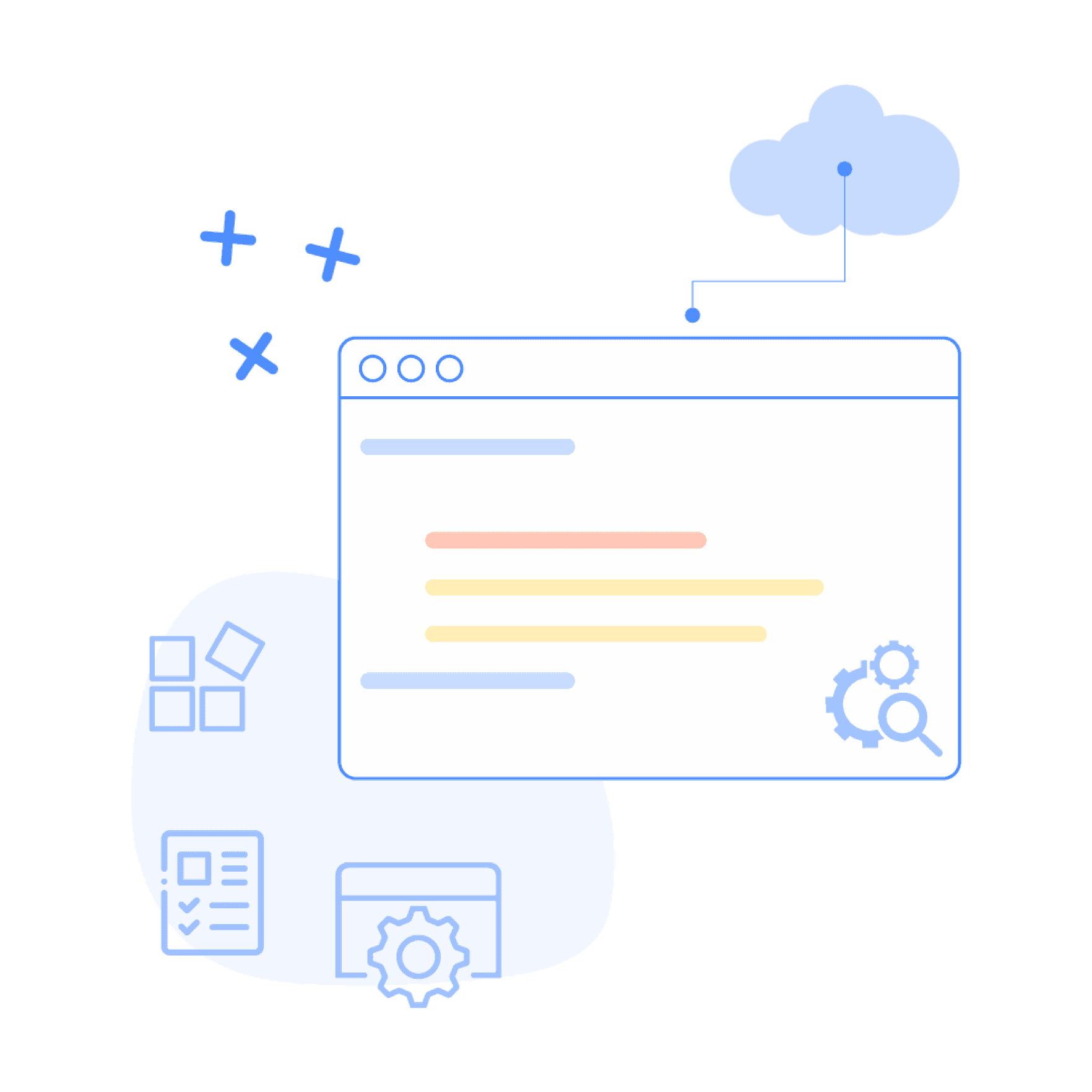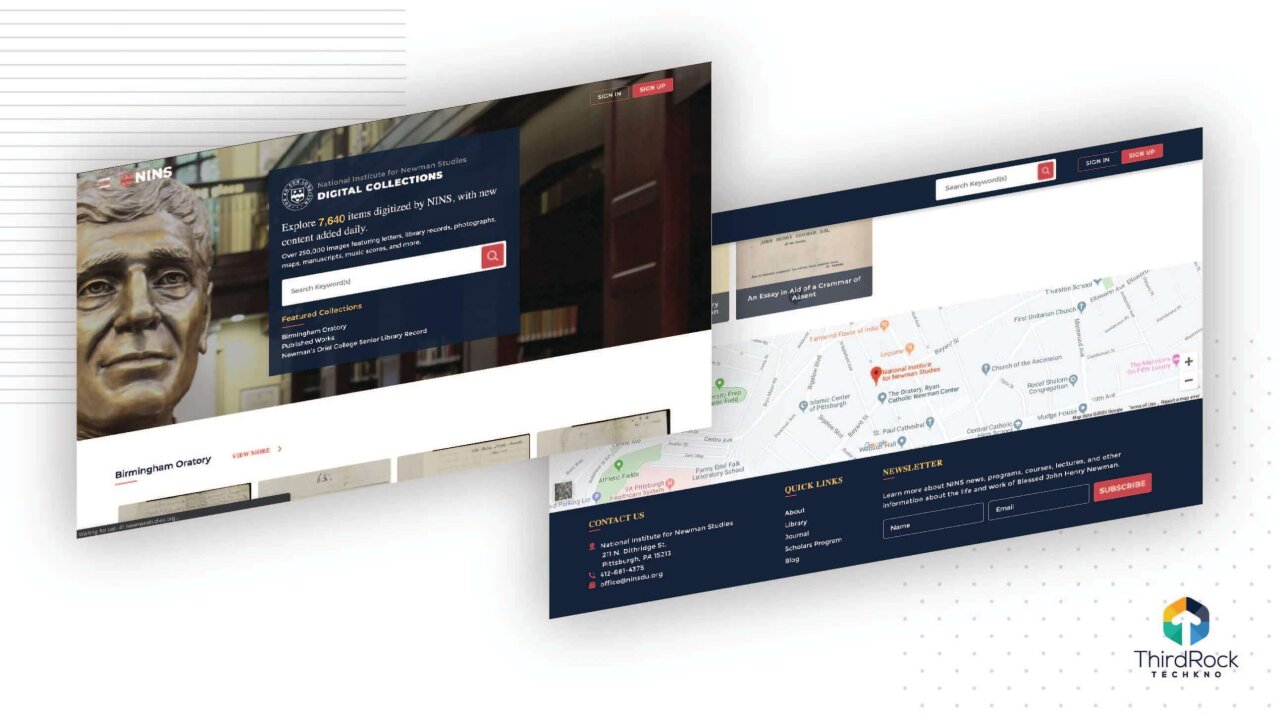WEB DEVELOPMENT
- ReactJS Development
- Angular Development
- VueJS Development
- Python Development
- Low Code Development
- .Net Development
MOBILE DEVELOPMENT
- Flutter Development
- FlutterFlow Development
- React Native Development
- IOS Development
- Android Development
- AR App Development
PRODUCT ENGINEERING
- DevOps
- DevOps Consulting
- CI/CD implementation
and management - Infrastructure as a Code
QUALITY ENGINEERING
- Software Testing
- Test Automation
- API Testing
- Microservices Testing
- Performance Testing
- Security Testing
CLOUD DEVELOPMENT
- AWS Development
- Azure Development
HIRE WEB DEVELOPER
- Hire Angular Developer
- Hire NodeJS Developer
- Hire ReactJS Developer
- Hire VueJS Developer
- Hire Python Developer
- Hire Laravel Developer
- Hire .Net Developer
HIRE MOBILE DEVELOPER
- Hire Flutter Developer
- Hire FlutterFlow Developer
- Hire React Native Developer
- Hire IOS Developer
- Hire Android Developer
- Hire AR App Developer
- Hire Ionic Developer
HIRE CLOUD DEVELOPER
- Hire AWS Developer
- Hire Azure Developer


Our AngularJS Services
- 1. Dynamic Web Application Development
- 2. AngularJS App Upgrade and Maintenance
- 3. Enterprise App Interface and Development
- 4. Single Page Application using AngularJS
- 5. Application Migration Services
- 6. User Interactive Module Development
- 7. Custom Widgets Development
- 8. Custom AngularJS Development
Why Choose Us as Your AngularJS Development Company
Experienced Developers
Our skilled Angular developers have rich experience in Angular web design and development. We build customized, creative, and highly-interactive Angular applications that meet the requirements of startups and SMEs alike.

Trusted Delivery Methods
Our AngularJS web development services are an optimum combination of quality and timely delivery. We employ the agile methodology to keep you in the loop. Throughout Angular web development and mobile development, we focus on delivering solutions that meet your business goals, timeline, and budget.
Competitive Rates
Our AngularJS website development services offer you the most competitive rates in the market. Our personalized services meet different budget needs of our clients from across the globe.
Transparent Work Approach
We are an ethical Angular development services company that is strongly guided by transparency, honesty and integrity. We ensure complete project visibility right from the time you approach us with your needs. We use email, phone, Skype, Slack, and other mediums for regular communication with our clients.
Customer Satisfaction
As an Angular JS development company , we thrive on the dedication of our developers, quality analysts, and project managers towards customer satisfaction. We deliver Angular web development and mobile development solutions that align with our clients’ needs.
Client Testimonials
Our WORK speaks louder than our WORD. Find out how we helped clients overcome challenges and succeed.

NINS
Third Rock Techkno's solution forms the heart of the research library and receives great reviews from scholars and experts. Their work integrates complex frameworks and features to offer everything researchers need. They are open-minded and worked smoothly with the academic subject matter.

Dr Daniel T. Michaels
RentalQ
Many thanks for your wonderful for help on this project. They took over the project from a different company that promised the world and couldn’t deliver. Since hiring Tapan, His team have communicated and worked above and beyond to help release the first version of RentalQ. We are now working on Version 2 and can see a long standing relationship in the works. There are no doubts that this is the team for any projects you are working on or starting.

Russell
Main Features of Angular Development
Simple & Expressive
Angular is a very popular web framework because of its simple and component-based architecture. It perfect for managing heavy web applications that contain a number of components and complex requirements.
Speed & Performance
Angular executes various web techniques like bundling, compression etc. These techniques decrease the load time of web pages. This improves navigation and enhances UX.
Flexible Development
Angular uses component-based architecture. This allows Angular web development professionals to easily build a fully extensible architecture of the web app. The developed components can be reused easily.
Simplified MVC Pattern
MVC is quite popular as it isolates the application logic from the user interface layer and supports a separation of concerns.
Cross Platform
Angular can be used for any platform from web applications, in Electron for desktop apps and in Ionic for mobile apps.
Significant Experience
As an established AngularJS web development company, we have rolled out 50 live web applications using AngularJS.
Recent Angular Development Blogs

How to Build a Progressive Web Application (PWA) with Angular
Progressive Web Applications (PWAs) have revolutionized the way we experience the web. Combining the best of web and mobile applications, PWAs offer a seamless, fast, and reliable user experience. In this guide, we will delve into the steps of building a PWA with Angular, a powerful and widely used JavaScript framework A brief explanation of PWAs Progressive Web Applications are web applications that provide a native app-like experience to users. They can be accessed through web browsers but come with functionalities traditionally associated with native mobile apps. This includes offline access, push notifications, and the ability to install on the user's device. PWAs have gained immense popularity due to their ability to enhance user engagement and satisfaction. They bridge the gap between web and mobile, offering a responsive and reliable experience across various devices and network conditions. Studies have shown that PWAs can lead to a 76% increase in user engagement and a 38% boost in conversions compared to traditional mobile websites—source by Bootcamp. 7 Steps to Build a Progressive Web Application 1. Getting Started with Angular Before diving into PWA development, it's essential to have a solid understanding of Angular basics. Installing Node.js and npm Before diving into Angular, ensure that Node.js and npm are installed. These are essential for managing dependencies and running JavaScript on the server. Installing Angular CLI Angular CLI (Command Line Interface) simplifies the process of creating and managing Angular projects. Install it globally to access powerful commands for project management. Creating a new Angular project Use Angular CLI to create a new project. This command sets up the basic structure of your application and installs necessary dependencies. Understanding the project structure Familiarize yourself with the Angular project structure. This understanding will be crucial as you progress with designing and developing your PWA. 2. Designing Your PWA The design phase is crucial for creating a user-friendly and engaging PWA. Consider the following aspects: You can also check additional principles on responsive designs User interface and layout considerations Craft an intuitive and visually appealing user interface. Consider user experience and design principles to create a layout that enhances usability. Responsiveness and mobile-first design Ensure your PWA is responsive, adapting seamlessly to different screen sizes. Prioritize a mobile-first design approach for optimal user experience on various devices. Creating a basic layout using Angular components Leverage Angular components to structure and organize your application. These components enable you to build modular and reusable parts of your PWA. 3. Making Your PWA Installable Installability is a key feature of PWAs, allowing users to add them to their home screens like native apps. This involves Introduction to service workers Service workers are a cornerstone of PWAs, enabling offline functionality and background processes. Understand their role and implementation within your Angular app. Registering a service worker in your Angular app Implement service worker registration to allow your PWA to work offline and provide a reliable user experience even with limited or no internet connectivity. Implementing a manifest file A manifest file defines how your PWA appears when installed on a user's device. Customize this file to enhance the app's appearance and behavior. Adding an "Add to Home Screen" feature Encourage users to install your PWA on their home screen for quick access. Implement this feature to enhance user convenience. Also, check: the pros and Cons of PWA 4. Implementing Offline Capabilities Offline support is a hallmark of PWAs, allowing users to access content and functionality without an internet connection. To achieve this: Caching static assets Optimize your PWA's performance by caching static assets. This ensures quick loading times, even in offline mode. Caching dynamic content using service workers Extend caching to dynamic content, allowing users to access essential information even when offline. Handling offline data synchronization Implement strategies to synchronize data when the device reconnects to the internet, ensuring the PWA remains up-to-date. 5. Enhancing Performance Performance is crucial for a positive user experience. Optimize your PWA by: You can also check web performance guidelines for optimizing the PWA Lazy loading modules Improve performance by implementing lazy loading for modules. This allows the application to load only the necessary components when needed. Optimizing images and assets Optimize images and assets to reduce load times, contributing to a smoother user experience. Minimizing HTTP requests Minimize the number of HTTP requests your PWA makes to enhance speed and efficiency. Angular performance best practices Adopt best practices recommended by Angular for optimal performance. This includes efficient data binding and module structuring. 6. Improving User Experience Beyond the core features, PWAs can enhance user experience through additional features Implementing push notifications Enhance user engagement by incorporating push notifications. Keep users informed about updates and relevant information. Implementing background sync Enable background synchronization to ensure data is updated even when the app is not actively in use. Creating a smooth navigation experience Prioritize smooth navigation within your PWA, providing users with an intuitive and enjoyable journey through your application. Implementing offline fallback pages Prepare for unexpected scenarios by creating offline fallback pages. This ensures users still have access to critical information when offline. Also Read:- Top 7 Web Application Development Trends to Look in 2021 7. Testing Your PWA Thorough testing is essential to ensure your PWA delivers a seamless and reliable experience Unit testing Angular components and services Ensure the reliability of your PWA by conducting thorough unit tests on Angular components and services. End-to-end testing with Protractor Perform end-to-end testing using Protractor to identify and rectify any issues that may arise during the user journey. Testing PWA-specific features Dedicate testing efforts to PWA-specific features, such as offline functionality and push notifications, to guarantee a seamless user experience. Unlocking PWA Potential with Angular In summary, building a Progressive Web Application with Angular involves a series of steps that enhance the overall user experience. By combining Angular's robust features with PWA principles, developers can create applications that are fast, reliable, and engaging. Benefits of PWAs for web developers and users PWAs offer numerous advantages. For developers, they simplify the development process, allowing for a single codebase across various platforms. Users benefit from faster loading times, offline access, and a native app-like experience without the need for installation. We, at Third Rock Techkno, offer dedicated development solutions for ensuring a high-quality market-driven product development that can cater to your business goals efficiently. Check out our portfolio and drop us a line to get started today! FAQs 1. Is Angular good for PWA? Yes, Angular is well-suited for building PWAs. Its modular structure, powerful features, and extensive community support make it an excellent choice for developing progressive web applications. 2. What is the difference between PWA and SPA? While both PWAs and SPAs (Single-page applications) offer dynamic user experiences, PWAs go a step further by providing additional features such as offline access, push notifications, and the ability to be installed on a user's device. 3. When should you not use PWA? PWAs may not be suitable for every scenario. Avoid using them if your application requires extensive native device functionality that cannot be replicated in a web environment.

Angular 8 Developer Roles and Responsibilities: A Comprehensive Guide
Angular 8 has come as a frontrunner, helping developers to create interactive, scalable, and high-performance web applications. With its robust architecture, comprehensive toolkit, and ever-evolving features, Angular 8 has become the preferred choice for building modern web applications. Angular 8, the latest iteration of the popular Angular framework, is a TypeScript-based open-source web application framework spearheaded by Google. It provides a comprehensive set of tools and libraries for building single-page applications (SPAs) that are both performant and maintainable. Importance of Angular 8 in Web Development Angular 8 has gained immense popularity among web developers due to its numerous advantages, including: * Component-based architecture: Angular 8 promotes modularity and reusability through its component-based architecture, making it easier to manage large-scale web applications. * Two-way data binding: Angular 8 simplifies data management with its two-way data binding mechanism, ensuring seamless synchronization between the user interface and application data. * Dependency injection: Angular 8's dependency injection system facilitates loose coupling between components, enhancing code maintainability and testability. * Performance optimization: Angular 8 is designed with performance in mind, utilizing techniques like change detection and lazy loading to optimize resource usage and deliver a responsive user experience. Role of an Angular 8 Developer An Angular 8 developer plays a crucial role in web development, responsible for designing, developing, and maintaining front-end web applications using the Angular framework. Their expertise lies in translating business requirements into functional and engaging user interfaces. Key Skills and Qualifications Required To excel as an Angular 8 developer, individuals should possess a combination of technical skills and personal qualities, including: Technical Skills * Proficient knowledge of the Angular 8 framework, including its components, directives, services, and modules. * Strong understanding of HTML, CSS, and JavaScript. * Experience with TypeScript, the preferred language for Angular development. * Familiarity with RESTful APIs and data exchange protocols. * Knowledge of version control systems like Git. Also check:- Top Angular 14 Features and Advantages You Must Know in 2024 Personal Qualities * Strong problem-solving and analytical skills. * Excellent communication and collaboration abilities. * Adaptability and willingness to learn new technologies. * Attention to detail and commitment to delivering high-quality work. Responsibilities of an Angular 8 Developer The responsibilities of an Angular 8 developer encompass a wide range of tasks, covering various aspects of front-end development and application maintenance. Front-end Development * Creating interactive and engaging user interfaces (UIs) using Angular components and directives. * Integrating UI designs provided by designers or collaborating with them to create effective designs. * Ensuring responsive web design, optimizing UIs for different screen sizes and devices responsive web design of an Angular 8 application. Application Performance Optimization * Optimizing code for performance, minimizing unnecessary processing and data requests. * Reducing load times and improving application responsiveness. * Minimizing resource usage and ensuring efficient application operation. Maintaining Code Quality * Conducting code reviews to identify and address potential issues. * Writing comprehensive unit tests and integrating them into the development process. * Refactoring code to improve maintainability and readability. Collaboration with Back-end Developers * Integrating with back-end APIs to fetch and manipulate data. * Collaborating with back-end developers to ensure seamless data exchange and application functionality. Version Control and Code Repository Management * Utilizing version control systems like Git to track code changes and maintain different versions. * Managing code repositories effectively, ensuring proper branching and merging strategies. May be read:- What are Standalone Components And How To Use in Angular? Angular 8 for Developer Success Angular 8 developers play a pivotal role in web development, responsible for creating and maintaining modern web applications using the Angular framework. Their skills and expertise are crucial in delivering high-quality, performant, and scalable web solutions. With the increasing demand for interactive and engaging web applications, skilled Angular 8 developers are in high demand. Their expertise is sought after by companies across various industries, making it a promising career path for individuals with a passion for web development. If you are looking for an Angular Development company Third Rock Techkno will provide you with many opportunities starting from e-commerce development to healthcare. FAQs 1. What are the daily tasks of an Angular developer? Angular developers typically create reusable UI components, integrate with backend APIs, optimize code for performance, write unit tests, and debug and troubleshoot issues. 2. Is Angular developer in demand? Yes, Angular developers are in high demand due to the framework's popularity and power. 3. How to improve Angular skills? Practice regularly, read the Angular documentation, attend meetups and conferences, and contribute to Angular projects. 4. Can I learn Angular in 2 months? Learning the basics of Angular in 2 months is possible, but becoming proficient requires more time and practice.

Angular Routing
Routing in a single-page application gives a feel to the user that the user will be just seeing HTML upgradation and new data rendering, this is a faster approach for avoiding the timespan of loading a whole new page from the server. Here only the view will be updated and for updating the view from one to another Angular Routing is used. The Router enables navigation by interpreting a browser URL as an instruction to change the view. Angular Router * Angular Router is a powerful Javascript router built and maintained by the Angular Core team and it can be installed by installing @angular/router package. * It provides a complete routing library with the possibility to have multiple router outlets, different path-matching strategies, easy access to route parameters, and route guards to protect components from unauthorized access. Router Outlet * The router-outlet is a directive available from the router Library which helps to change components based on the URL * A single application can contain multiple router outlets * For adding router outlets you need to add the following code in the HTML file Routes and Paths * Routes are comprised of a path and a component attributes * The path refers to the part of the URL that determines a unique view that should be displayed, and the component refers to the Angular component that needs to be associated with a path. * Based on the route definition provided router will navigate the user to a specific view * Each route maps a URL path to a component * The path can be empty which is a default path and is generally used at the start of the application Wildcard routes * Wildcard routes are defined by string (**) * This route will be executed if the requested URL is not defined in the routes * These routes are generally used to define Not Found routes * For example, Routes matching strategies * Each route can have different matching strategies. Default strategies would be just matching routes in the browser URL which is just matching the route path’s prefix. * For example, the default path definition can also be written as, * Here the patchMath attribute specifies the matching strategy. In this case, it’s the prefix that is the default. * Another matching strategy is “full”. When it's specified for a route the router will check if the path is exactly equal to the path of the current browser’s URL: Route Params * For passing data between multiple components angular routes will help * Angular Router allows you to access parameters in different ways: * ActivatedRoute * ParamMap * For passing route params you can use colon syntax, For example: Route Guards * Developers can set the route guards to set a logic whenever a route is accessed. * This logic will define whether the user should be able to access the component or not * For example, If the developer wants to check if the user is logged in or not at that time route guard will not allow non logged in user to access private pages * You can add a route guard by implementing the CanActivate interface available from the @angular/router package and extending the canActivate() method which holds the logic to allow or deny access to the route. * Route guard example, * You can then protect a route with the guard using the canActivate attribute: Navigation using HTML * For creating navigation links, the angular router provides routerLink directives. * This directive takes the path associated with the component to navigate to. For example: Using multiple router outlets * Using an angular router we can add multiple router outlets in a single application * A component has one associated primary route and can have auxiliary routes. * Auxiliary routes enable developers to navigate multiple routes at the same time. * All outlets should have a name instead of the primary outlet. * For example, * Then you can specify the outlet in the routing file where you want your component to be rendered Conclusion This tutorial demonstrated how to use the Angular Router to add routing and navigation to our application. We covered concepts like router-oulet, routes, and paths. Blog Ref: https://www.smashingmagazine.com/2018/11/a-complete-guide-to-routing-in-angular/
Get the exact time and cost estimation of your project
Our business consultants and industry strategists will devise just the right scoping document to meet your unique project needs.
Schedule A Discovery Session











